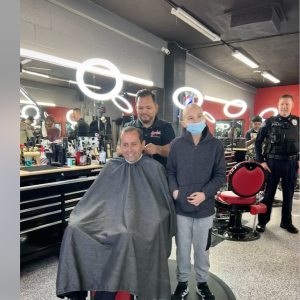 View Winners →
View Winners → Institute of Culinary Education Opens its West Coast Campus in Pasadena
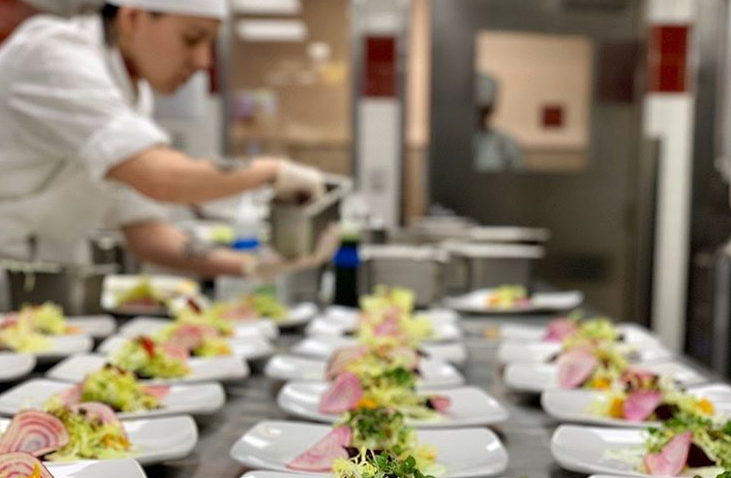
By Brianna Chu
Students of all ages, background, and experience are moving in and out of the Institute of Culinary Education (ICE)’s fairly new Los Angeles campus from 7:30 am to 10:00 pm most weekdays. There are three shifts of classes: 7:30-11:30 am, 12:00-4:00 pm, and 6:00-10:00 pm, the latter of which is meant for working students and only runs three days a week. They try to get as many students in their campus every day, to maximize the teaching that can be done and the number of students that can learn and further their careers. Despite having opened their doors only a year ago, the campus has gone from 0 students to 250 within that span of time.
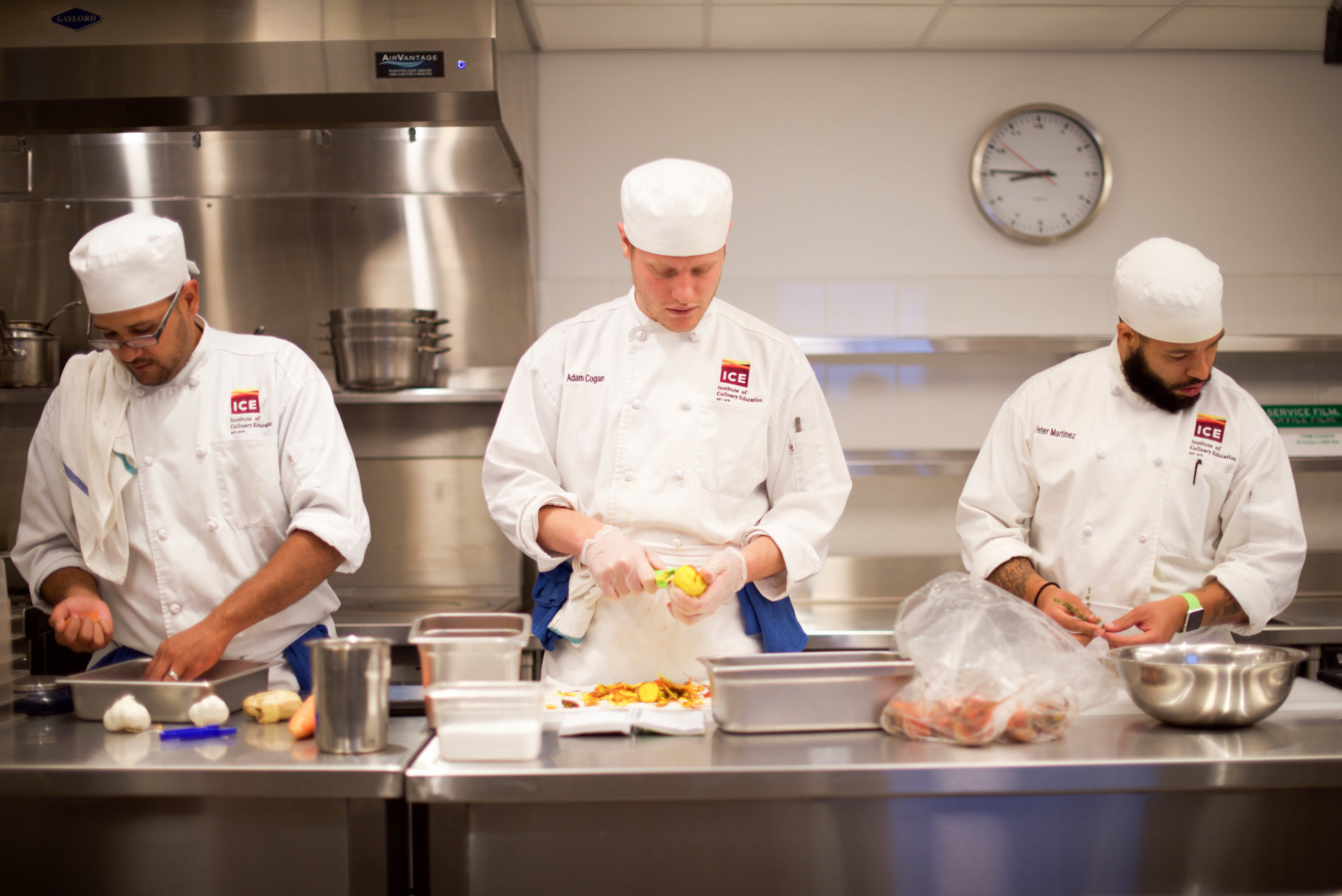
Hard at work. – Courtesy photo.
ICE is “unapologetically a vocational school,” in the words of Campus President Lachlan Sands, and all students start working with career advisors from the very beginning of their terms all the way to the end. Not only do students partake in volunteer work during the course, but after completion of their curriculum, each student continues on to fulfill a 210-hour externship. ICE works hand-in-hand with employers, from listening to the kinds of skills that restaurants and businesses are focusing on, as well as advertising work opportunities from employers to their students (there are even work flyers in their elevators!). ICE alumni have gone on to pursue successful careers in every arena of the food business: as fine dining chefs, pastry chefs, chocolatiers, food and beverage managers, nutrition educators, restaurant HR directors, research and development chefs, mixologists, aquaculturists; you name it! They work with local restaurants to scout out job opportunities for their students and help students pin down a mandatory internship, so every student gets some real-kitchen experience under their aprons, too. When visiting their library – or, Learning Resource Center, as it is officially called – a job interview was quite literally taking place in the corner. ICE aims to produce students who can cook at the highest echelon kitchens in the city – students have gone on to cook at Spago, Rossoblu, French Laundry, and many more restaurants of the like – because they can go anywhere from there!
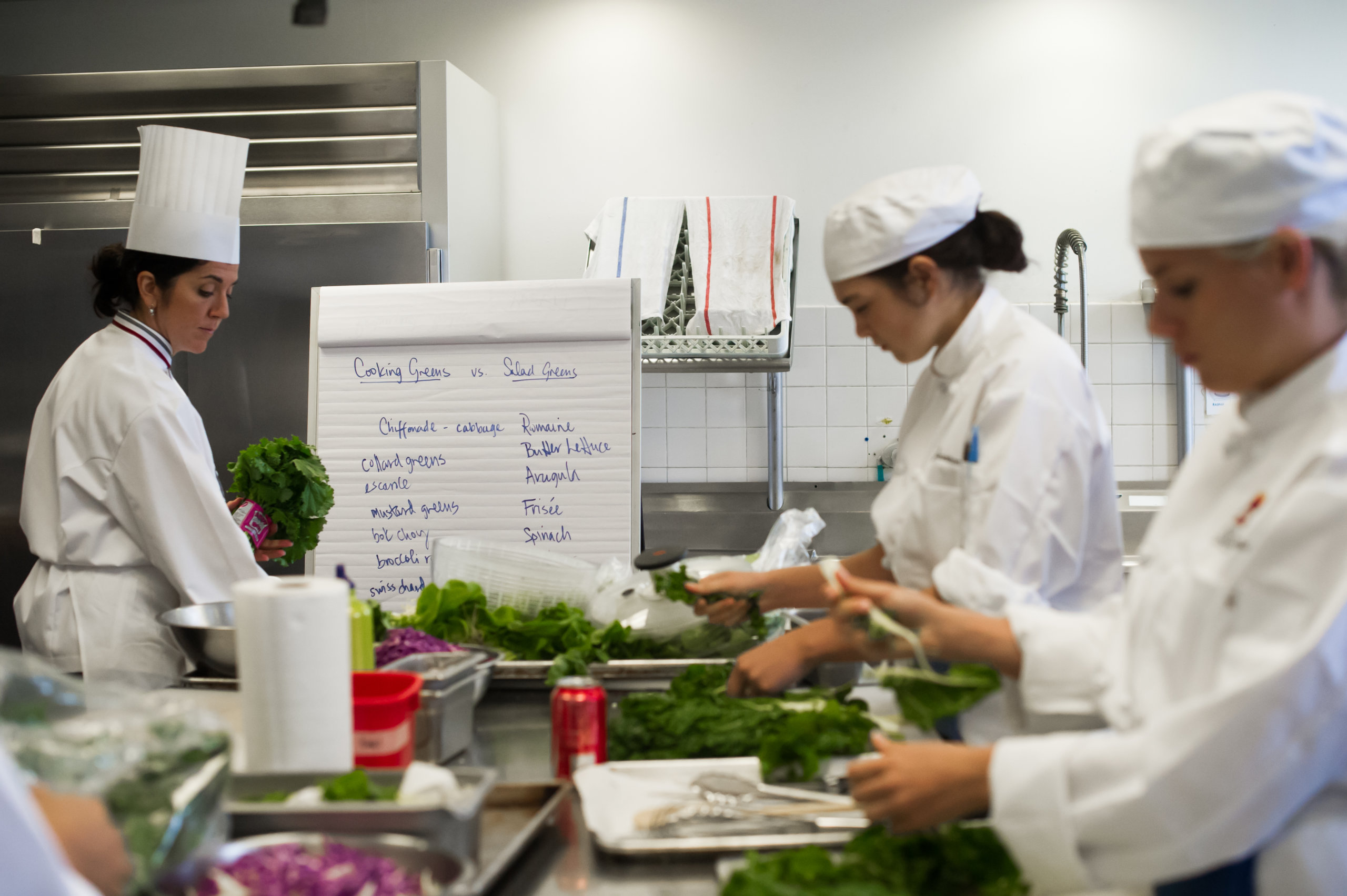
A peek into labs. – Courtesy photo.
And ICE receives all manner of students – from young, fresh out of high school or maybe college, students who may never have even cooked before to current cooks who want to go back to school to broaden their techniques and move their careers into a different direction. They welcome everyone, and all the students, regardless of personal experience, start right at the knife basics. After the first couple of weeks, the skill levels start leveling out. Sands explained that the first half of the curriculum (for instance, the Culinary Arts diploma curriculum is an intensive learning process over 108 days, which is fairly representative of the length of most of their courses, usually about 8-12 months) focuses on developing technique, but the second half involves developing students’ palates and helping students “find their culinary voice.” Students move from lab to lab every 27 days as they progress through the course. Each lab is dedicated to certain classes and is taught by a diverse faculty. Students move through the campus until they culminate in the capstone contemporary class. One of the last assignments for Culinary Arts students is a “food truck” competition! While not actually involving food trucks – just sectioning off the lab space to give teams space limitations – it’s a test of students’ mise en place, technical and organizational skills, as well as their mastery of their chosen type of food and creativity with that theme (for instance, I got a peek into some students preparing a Thai-themed menu for their food truck, while another chose to focus on sandwiches, preparing handmade pickles days in advance), and teamwork. The rest of the school comes in and tastes the students’ “food truck” offerings to determine a winner; and other students also offer their peers mini Yelp reviews and feedback.
The Green Street location was perfect for ICE to set up their West Coast campus, as it was previously a Le Cordon Bleu that had itself invested millions of dollars into equipment and appropriate infrastructure for a culinary school already. However, ICE did invest some more in renovating and updating the building and equipment, as well as trying to improve the spaces to be better educational environments for their students. One of the notable changes throughout the building was the addition of quite a few windows, to bring some of the natural, brilliant Southern California sunshine into the kitchens. Students spend months in these kitchens, and it was a building oversight they wanted to correct as a quality-of-life improvement for students. There were a few equipment upgrades, too, including an incredible walk-in oven. Sands demonstrated the oven’s capacity – you can roll a full bakery rack into the oven, fill every shelf on the rack with pastries, and once the door to the oven is closed, the bottom of the oven lifts the entire rack up and rotates it while hot air is blown around the interior of the oven, to ensure that each pastry is perfectly and evenly cooked as much as the last. From equipment to curriculum to faculty to events, ICE has worked hard to make sure that every moment of their students’ experience on campus is as enjoyable as it is educational.

Rolling out fresh pasta. – Courtesy photo.
ICE’s LA campus offers four diploma programs: Culinary Arts, Pastry and Baking Arts, Health-Supportive Culinary Arts (HSCA), and Restaurant and Culinary Management. The HSCA curriculum is new to the LA campus, and rolls out at the end of this month. The curriculum focuses on plant-based dietary requirements, with an added focus on health-conscious, sustainable cuisine, based on the program of the Natural Gourmet Institute. ICE partnered with them to offer their program through ICE, and the HSCA program provides students the same technical skills as the other culinary courses, but also includes a strong nutritional background for specialized diets and food preferences. One the most famous graduates of the Natural Gourmet Institute is Tal Ronnen, who graduated from the center in New York.
Some students choose to take the Culinary Management diploma at the same time as their culinary course; which means that some students do spend 8 hours a day on campus every day. This course focuses on the skills needed to run a hospitality or culinary business, and is not part of base program as some students don’t necessarily want to take it. The Culinary Management diploma consists of 7 months of academic classes and covers the entrepreneurial, business marketing, and legal side of running a restaurant. By the end of the business course, students present business plans, which some have then gone on to implement successfully! Most of these students are double diploma students, taking a pastry, culinary, or HSCA course at the same time. With the amount of time students spend on campus, ICE really tries its best to make sure students enjoy their time on campus, enjoy the learning process, because it’s quite a bit of time. And as far I could tell, they succeed. There were smiles, laughter, and friendly hubbub in every lab I walked through, even while students were hard at work preparing dishes or listening to their instructors.
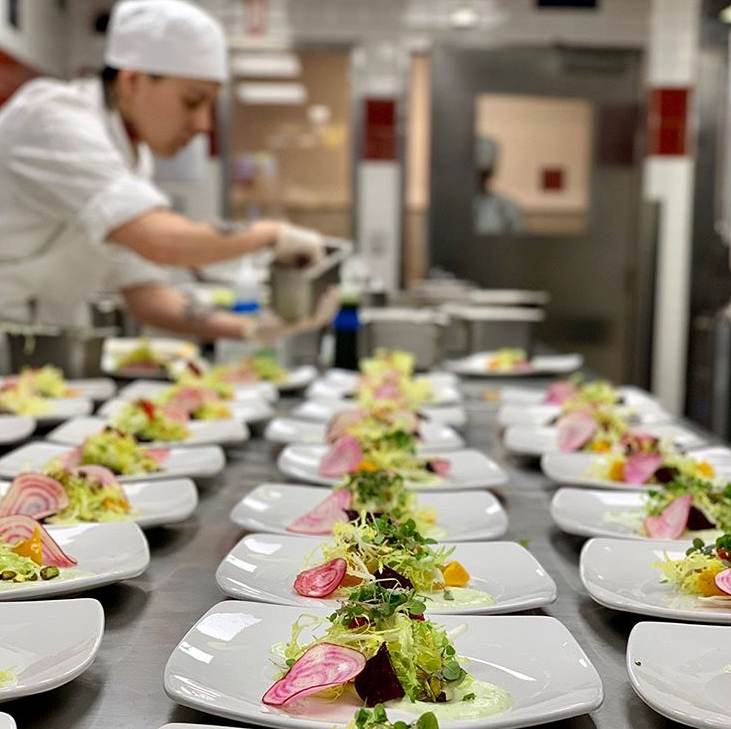
Preparing plates. – Courtesy photo.
However, ICE isn’t just a campus for aspiring chefs. There are recreational course packages for anyone who wants to take some courses at ICE, and their panels and events are open to the public. Each class is four hours long and taught by a professional chef. Sands noted that the most popular course for the non-professionals was actually the one-off Knife 101 course – which, to be honest, everyone should probably take at one point in their lives! But there’s also another one-off Tuscan cooking course, or, a longer, four-class sushi program package, at the end of which you can eat the products of your labor… Most people tend to sign up to these courses in pairs, and perhaps it’s an obvious choice. Food naturally brings people together, and nothing sounds more fun than bringing a partner in crime with you to try your hand at baking, or making your own sushi!
ICE is a hub of culinary education and celebration, holding open welcoming arms to any and all. From prospective future chefs to food enthusiasts, ICE aims to cultivate everyone’s inner culinary voice and enjoyment in the kitchen!
Institute of Culinary Education: Los Angeles Campus
521 E. Green St.
Pasadena, CA 91101
(888) 718-2433



























































